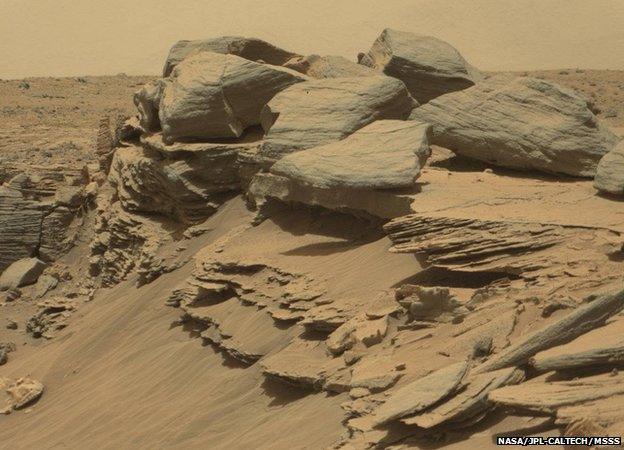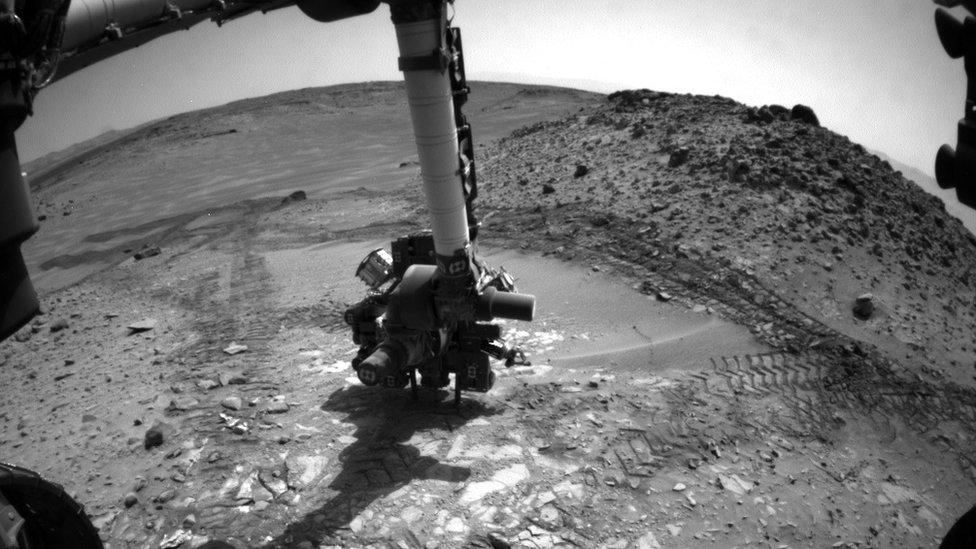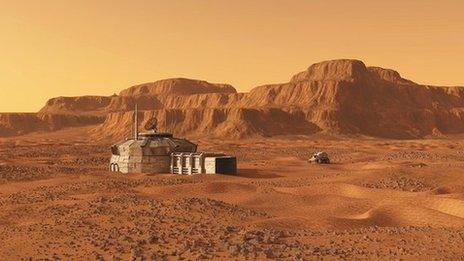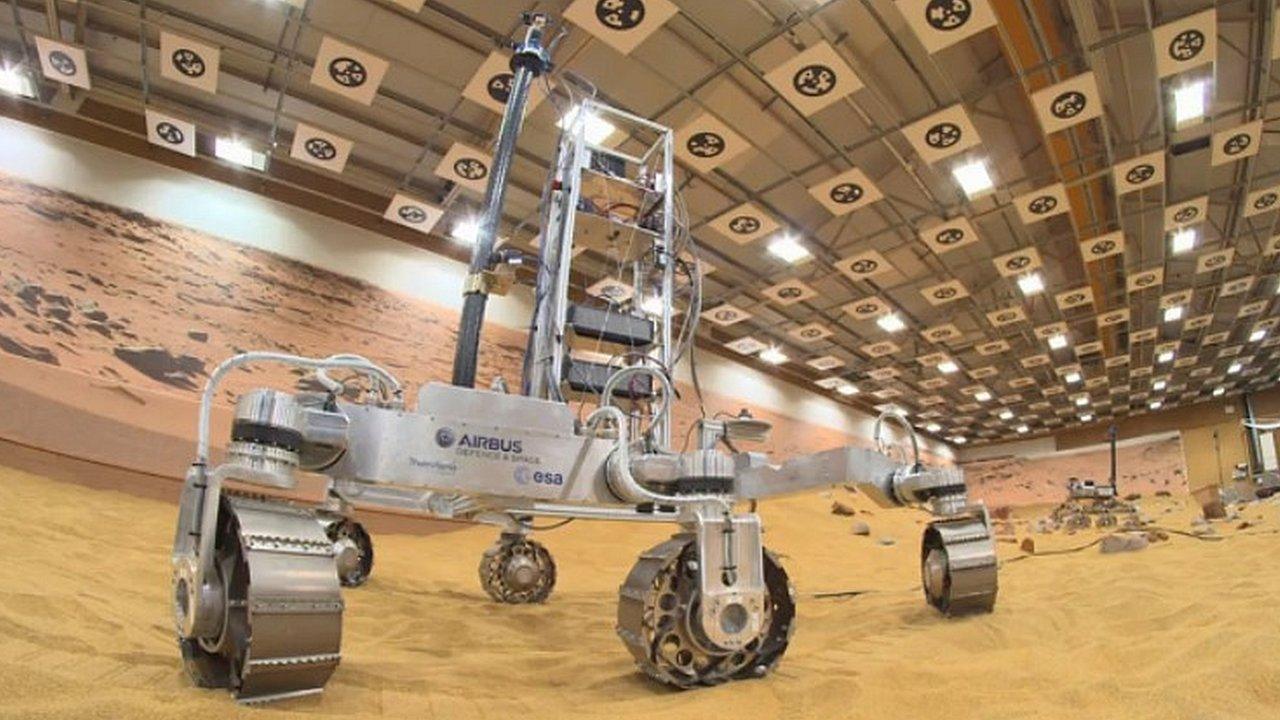Curiosity Mars rover drills into base of Mount Sharp
- Published

The mudstone was softer than previous drill targets. The tailings are a different colour, too
The Curiosity rover has drilled its first full hole in Martian rock since May.
The robot used its power tool to grind out a sample from a pale, flat slab at a location dubbed "Pahrump Hills".
Curiosity has previously drilled into three rocks to collect powdered tailings for analysis in its sophisticated onboard laboratories.
This latest acquisition should give scientists a taster for the type of sediments that lie ahead.
The Nasa rover is driving into the nearby foothills of Mount Sharp, a 5km peak at the centre of Mars' Gale Crater.
Researchers hope the chemistry of the rocks at the base of this mountain will reveal new details about the environmental history of Mars.
Already, the one-tonne robot has established that a lake and rivers were present on the floor of Gale billions of years ago.
Scientists say conditions during those ancient times could have supported micro-organisms - had they been present.
Curiosity has spent much of the past year simply driving, trying to get to Mount Sharp, which was always intended to be its primary mission target.

The hole was drilled in the foreground, just to the right of the sand ripples. Mount Sharp is in the far distance
Wednesday's operation followed a small test hole that was sunk in the Pahrump mudstone on Sunday to check its stability.
Drilling a deeper, 6cm hole has the effect of pushing pulverised rock particles up into a collection chamber.
After being sifted and sieved, a pinch of this material can then dropped into the labs housed in Curiosity's belly.
The mission team is hopeful that the Pahrump sample will have a high silica (silicon) content - something the robot has seen in other rocks in recent weeks when probing their chemistry with spectrometers.
This would support other indications that the local sediments were laid down in the presence of abundant water.
After two years on the planet, Curiosity has reached what the US space agency says is a critical juncture in its mission.
It is now moving off the rocks that make up the crater floor and on to a geological unit known as the Murray Formation. Pahrump is its first chance to sample material in this formation, which likely makes up the base layers of Mount Sharp.
As the rover moves to higher and higher ground over the coming months (and, most probably, years), it will come into contact with progressively younger sediments.
Eventually, it should reach rocks that represent a time when Mars moved from a relatively warm and wet climate to one that more closely resembles the dry, desiccated world we see today.

Curiosity has seen an extraordinary array of rocks on its travels
Jonathan.Amos-INTERNET@bbc.co.uk and follow me on Twitter: @BBCAmos, external
- Published21 August 2014

- Published1 August 2014

- Published6 May 2014

- Published27 March 2014

- Published9 December 2013

- Published9 December 2013
